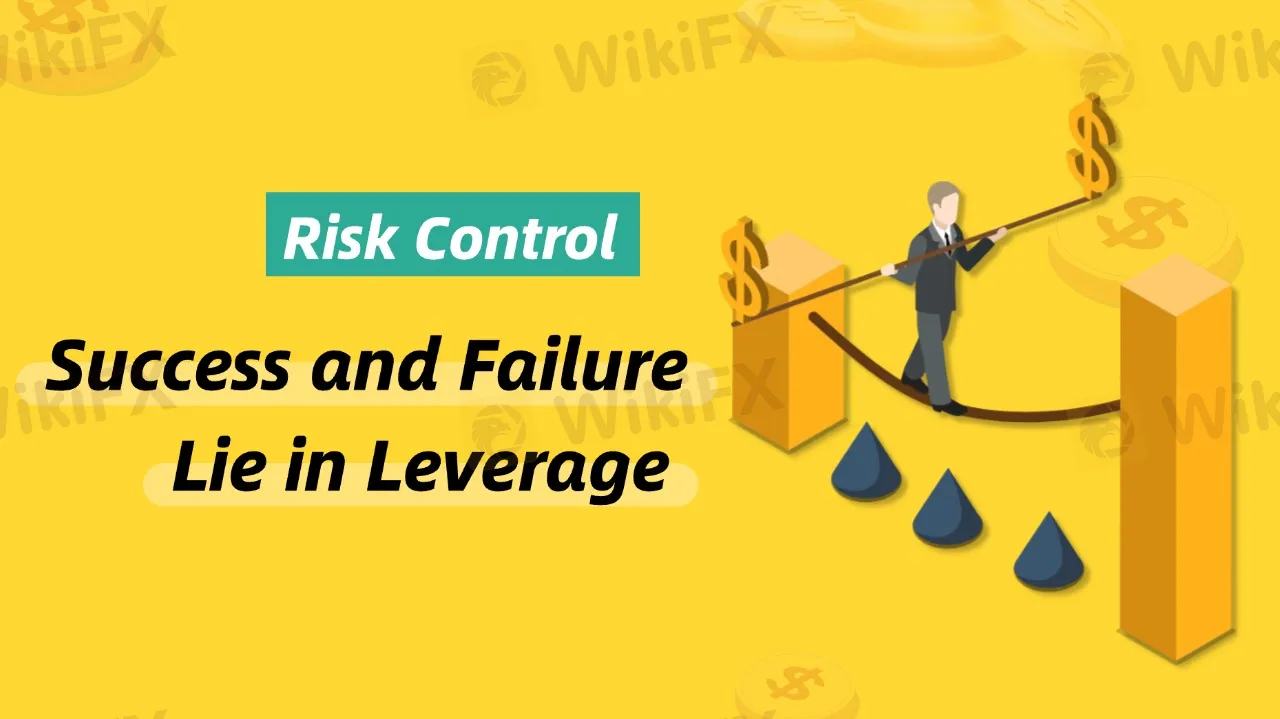简体中文
繁體中文
English
Pусский
日本語
ภาษาไทย
Tiếng Việt
Bahasa Indonesia
Español
हिन्दी
Filippiiniläinen
Français
Deutsch
Português
Türkçe
한국어
العربية
Success and Failure Lie in Leverage
Abstract:In forex trading, leverage is a very important concept as it allows you to control larger positions with a relatively small amount of capital. Of course, this also means that the risks are increased.

Leverage is like borrowing money to make investments, using other peoples funds to amplify the size of your trades. Leverage not only allows you to make larger profits, but it also magnifies your losses. Therefore, understanding how leverage works and how to use it properly is a skill that every forex trader must master.
In the forex market, many platforms offer very low margin rates, with some as low as 2%. This means you only need to invest 2% of your capital to control a position 50 times larger than your investment. This makes forex trading very attractive for traders who enjoy using leverage.
For example, if you use 50:1 leverage, a 1% market fluctuation could result in a 50% return on your initial investment. This means even small market movements can bring substantial returns. However, the same principle applies in reverse—if the market moves against you, your losses can be magnified as well. So, leverage is like a double-edged sword: it can help you earn more, but it can also cause you to lose more.
How to Manage the Risks of Leverage
Because leverage amplifies risks, you need to be very cautious. To prevent excessive losses, proper risk management is crucial. Fortunately, forex platforms typically offer useful tools to help you control risks:
Stop-Loss Orders: This is an automated tool that helps you close your position when the market moves against you, preventing further losses. It allows you to control the maximum loss youre willing to take on each trade.
Take-Profit Orders: Similar to stop-loss orders, take-profit orders automatically close your position when your predetermined profit target is reached. This helps you lock in profits and avoid missing out if the market reverses.
Trailing Stop: The advantage of this tool is that it adjusts the stop-loss level as the market moves in your favor, ensuring you can lock in profits while limiting losses if the market turns against you.
Guaranteed Stop-Loss Orders (GSLO): Unlike regular stop-loss orders, a GSLO guarantees that your position will close at a specific price, regardless of market slippage. Although theres an additional fee for this service, it provides stronger protection for your trades.
By using tools like stop-loss orders, take-profit orders, and guaranteed stop-loss orders, you can better manage risks and avoid excessive losses. Ultimately, successful forex trading hinges on the careful use of leverage and effective risk control. Remember, leverage is both an opportunity and a risk—your success or failure often depends on how you choose and manage it.

Disclaimer:
The views in this article only represent the author's personal views, and do not constitute investment advice on this platform. This platform does not guarantee the accuracy, completeness and timeliness of the information in the article, and will not be liable for any loss caused by the use of or reliance on the information in the article.
Read more

Gold Prices Fluctuate: What Really Determines Their Value?
Gold prices have been fluctuating recently, influenced by multiple factors. Since the beginning of 2025, gold has risen by 11%, hitting new historic highs multiple times in the first quarter.

Investors Beware! A Trillion Naira Wiped Out in a Week
Market takes a hit: a trillion naira wiped out—what happened?

Dollar Under Fire—Is More Decline Ahead?
The dollar faces its biggest decline of the year, strong-dollar logic challenged.

What Impact on Investors as Oil Prices Decline?
Oil prices have come under pressure amid mounting concerns over U.S. import tariffs and rising output from OPEC+ producers. With tariffs on key trading partners and supply increases dampening fuel demand expectations, investor appetite for riskier assets has cooled. This shift in sentiment poses a range of implications for different segments of the investment landscape.
WikiFX Broker
Latest News
Forex Trading: Scam or Real Opportunity?
The Hidden Tactics Brokers Use to Block Your Withdrawals
Beware: Online Share Buying Scam Costs 2,791,780 PHP in Losses
5 things I wish someone could have told me before I chose a forex broker
Unmasking a RM24 Million Forex Scam in Malaysia
U.S., Germany, and Finland Shut Down Garantex Over Money Laundering Allegations
Gold Prices Fluctuate: What Really Determines Their Value?
Dollar Under Fire—Is More Decline Ahead?
What Impact on Investors as Oil Prices Decline?
Is the North Korea's Lazarus Group the Biggest Crypto Hackers or Scapegoats?
Currency Calculator






